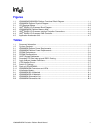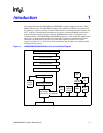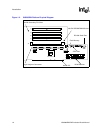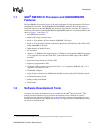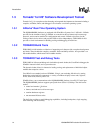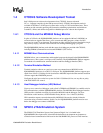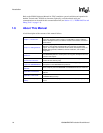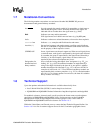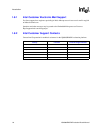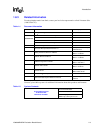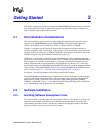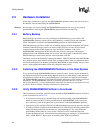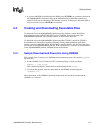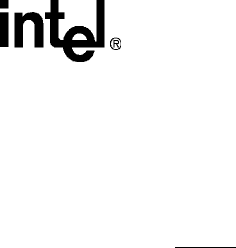
IQ80960RM/RN
Evaluation Board Manual 1-7
Introduction
1.7 Notational-Conventions
The following notation conventions are consistent with other i960 RM/RN I/O processor
documentation and general industry standards.
1.8 Technical Support
Up-to-date product and technical information is available electronically from:
• Intel’s World-Wide Web (WWW) Location: http://www.intel.com
• IQ80960RM and IQ80960RN Product Information: http://developer.intel.com/design/i960
For technical assistance, electronic mail (e-mail) provides the fastest route to reach engineers
specializing in IQ80960RM and IQ80960RN issues. Posting messages on the Embedded
Microprocessor Forum at http://support.intle.com/newsgroups/ is also a direct route for
IQ80960RM and IQ80960RN technical assistance. See Section 1.8.2.
Within the United States and Canada you may contact the Intel Technical Support Hotline. See
Section 1.8.1 for a list of customer support sources for the US and other geographical areas.
# or overbar
In code examples the pound symbol (#) is appended to a signal name to
indicate that the signal is active. Normally inverted clock signals are
indicated with an overbar above the signal name (e.g., RAS).
Bold Indicates user entry and/or commands.
PLD signal names are in bold lowercase letters (e.g., h_off, h_on).
Italics Indicates a reference to related documents; also used to show emphasis.
Courier font Indicates code examples and file directories and names.
Asterisks (*) On non-Intel company and product names, a trailing asterisk indicates
the item is a trademark or registered trademark. Such brands and names
are the property of their respective owners.
UPPERCASE In text, signal names are shown in uppercase. When several signals share
a common name, each signal is represented by the signal name followed
by a number; the group is represented by the signal name followed by a
variable (n). In code examples, signal names are shown in the case
required by the software development tool in use.
Designations for
hexadecimal and
binary numbers
In text, instead of using subscripted “base” designators (e.g., FF
16
) or
leading “0x” (e.g., 0xFF) hexadecimal numbers are represented by a
string of hex digits followed by the letter H. A zero prefix is added to
numbers that begin with A through F. (e.g., FF is shown as 0FFH.) In
examples of actual code, “0x” is used. Decimal and binary numbers are
represented by their customary notations. (e.g., 255 is a decimal number
and 1111 1111 is a binary number. In some cases, the letter B is added to
binary numbers for clarity.)



